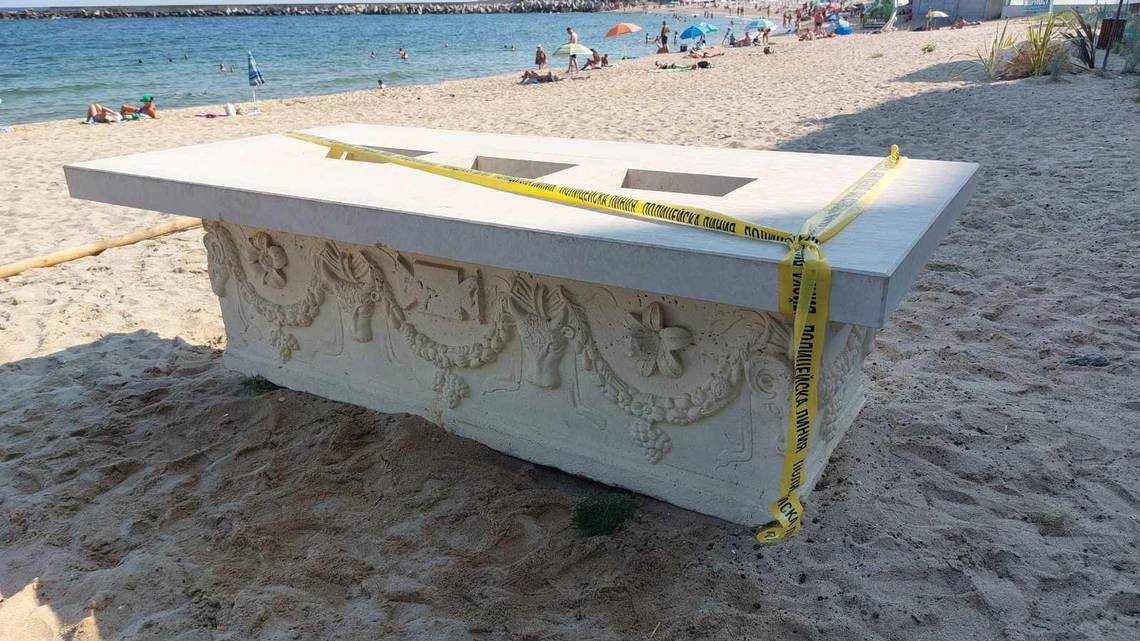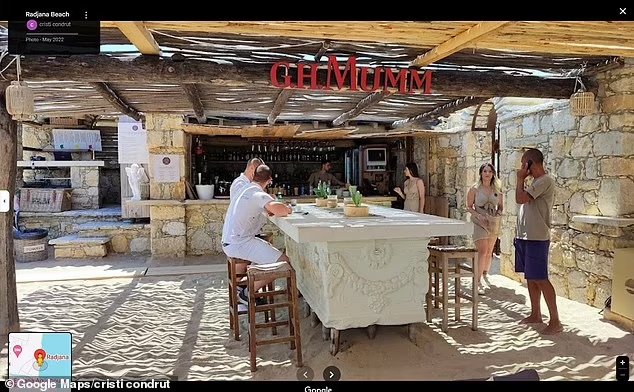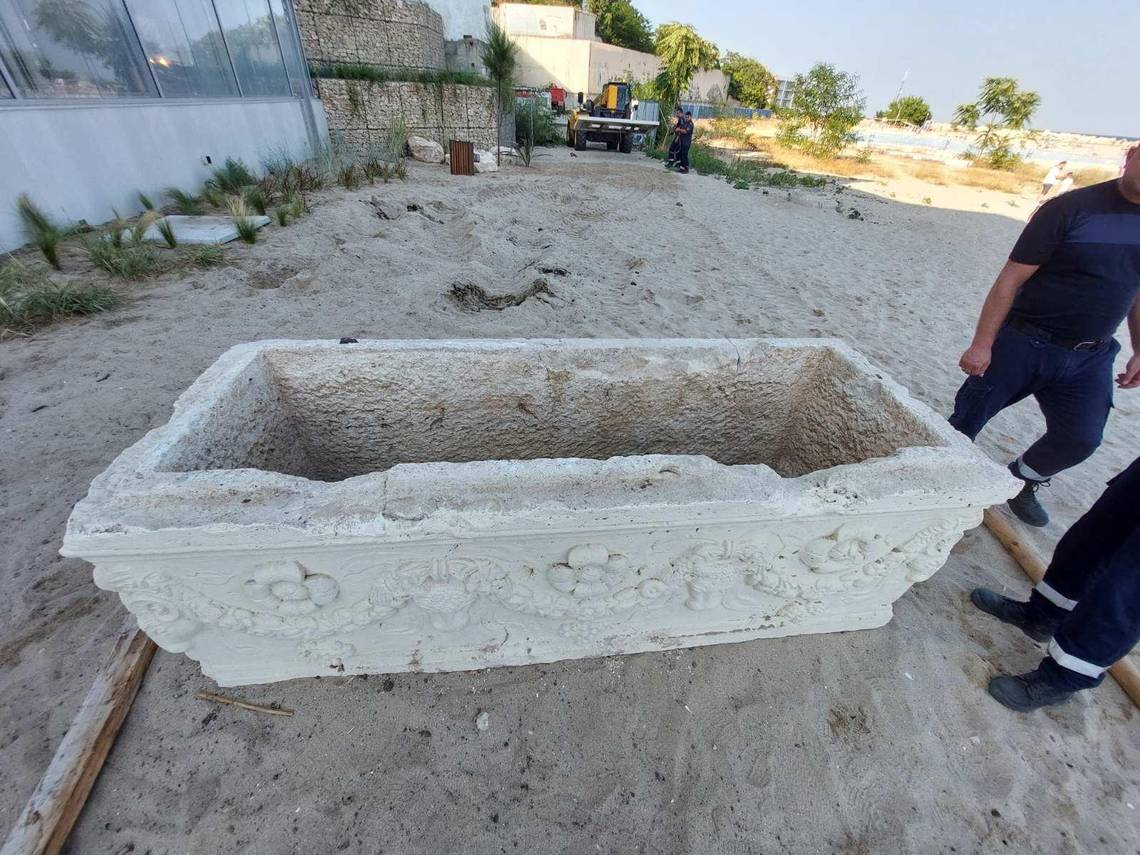
An attentive tourist recently made an astonishing discovery at Radjana Beach in Varna, Bulgaria.
What appeared to be an ordinary table turned out to be a 1,700-year-old Roman sarcophagus. The tourist, a former law enforcement officer, was on vacation when they noticed the stone structure’s intricate carvings and contacted the authorities.
Archaeologists were called in and identified the artifact as a Roman sarcophagus from the second century AD. According to officials, the sarcophagus measures about 9.8 feet long, 8.2 feet wide, and 3.3 feet high. The sides of the relic are adorned with carvings of garlands, grapes, flowers, and several horned animal heads. Although the original lid was missing, a slab had been placed on top, converting the artifact into a table.
Alexander Minchev, an archaeologist involved in the discovery, confirmed, “It’s a real Roman sarcophagus, though it was repainted at some point.” He also explained that the design style was unusual for the Varna area and suggested that it had likely been brought in from another region of Bulgaria.

The sarcophagus had reportedly been used as a table at the Radjana Beach bar for about four years. Its presence was confirmed by images and videos taken between 2020 and 2022, which showed customers sitting around the ancient relic, oblivious to its true identity. A promotional video from 2020 even featured the sarcophagus in its makeshift role.
Authorities, including the Bulgarian Ministry of Interior, were immediately informed about the discovery, and the artifact has since been moved to the Archaeological Museum in Varna for preservation. The museum team is continuing its examination of the artifact to uncover more about its origins and history.
Minchev emphasized, “In Bulgaria, every archaeological object, regardless of who finds it, belongs to the state.” He added that it is essential to investigate how such a significant relic ended up being repurposed as a table in a beach bar.

The Varna District Prosecutor’s Office has already launched a pre-trial investigation to determine how the sarcophagus came to be at Radjana Beach. No arrests have been made so far, and authorities have not disclosed whether any charges will be filed. The case raises concerns about the trafficking of historical artifacts in Bulgaria, an issue that has surfaced in the past.
In 2020, Bulgarian police seized 4,600 archaeological objects, including urns, lamps, arrowheads, and ancient coins, many of which originated from military camps in northern Bulgaria. Experts believe the sarcophagus, with its unusual design, could be linked to this larger pattern of artifact trafficking.